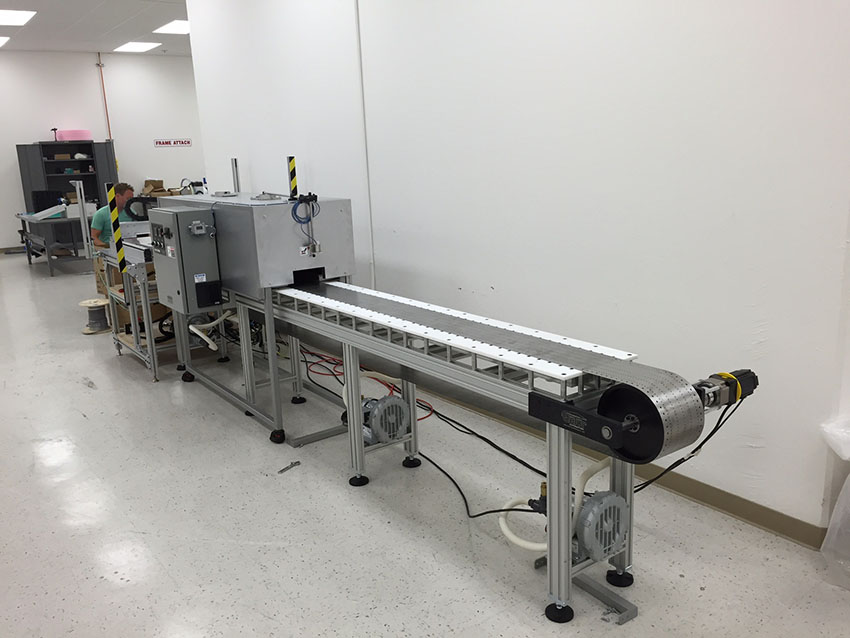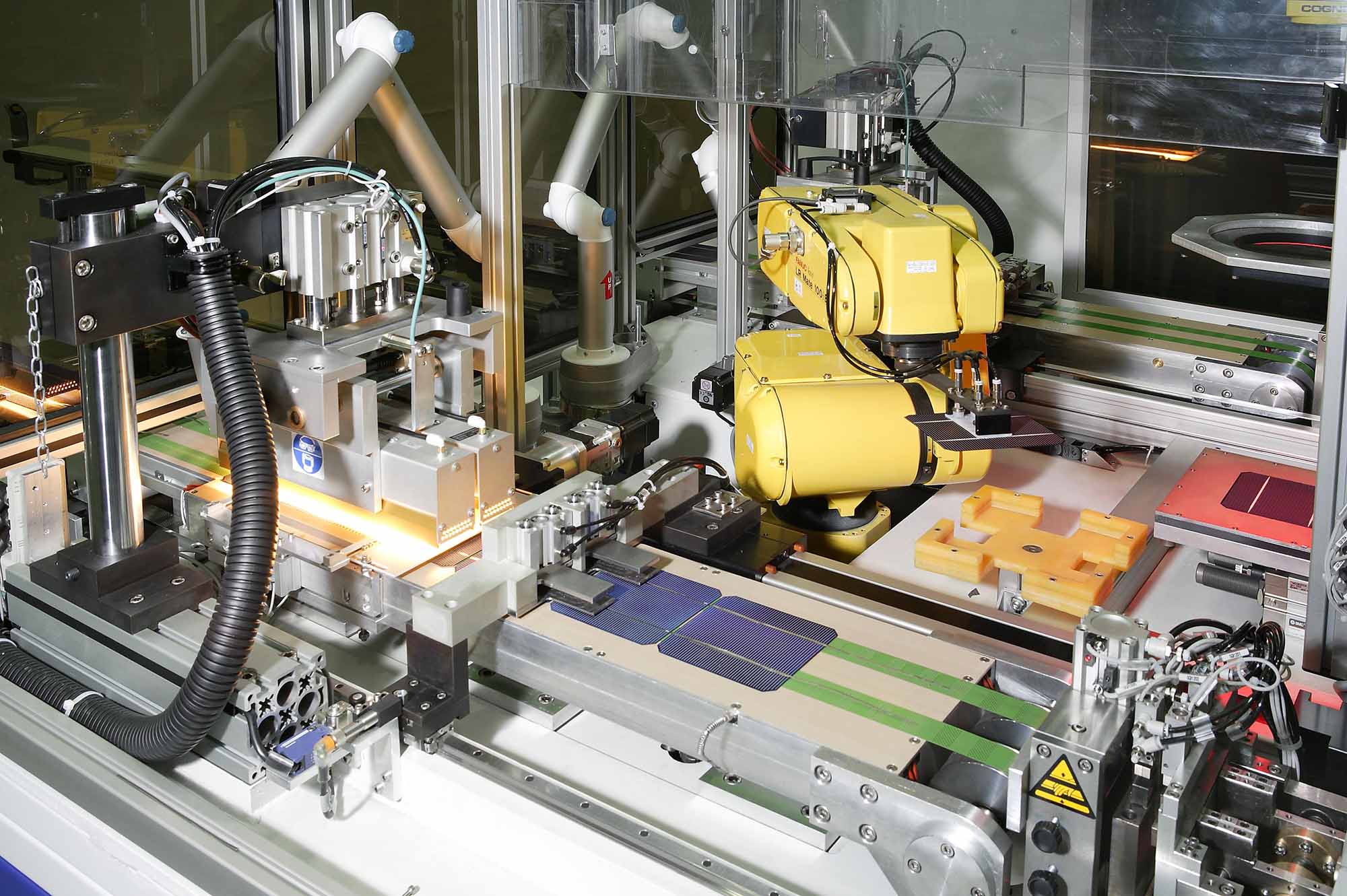Belt Technologies Inc. has been producing metal conveyor belts, metal timing belts and pulleys for new and existing conveyor systems for over 50 years. The company was established in the 1960’s, developing proprietary welding technology for NASA and the tobacco industry, and was spun off as a standalone business in 1988. In 1994, the European Sales office was opened in the UK, which now handles all company sales in the European and Asian markets. Using sophisticated technology and innovative manufacturing processes, they provide a countless range of configurations and coatings for custom-designed metal belts, metal drive tapes, and metal belt conveyor systems that benefit customers across a variety of industries including food processing, robotics, printing, solar panel production, medical device manufacturing, semiconductor, automated assembly lines, and many more.
Easy Engineering: What are the main areas of activity of the company?
BELT TECHNOLOGIES: Our main focus is stainless steel belts, either welded endless as a traditional conveyor belt, or as an open ended drive tape, generally used to actuate robotic equipment. We supply complimentary pulley designs to work hand in hand with our belts, which maximizes belt life. We also manufacture complete conveyor systems, incorporating belts, pulleys and motion control systems.
Metal belts offer advantages over similar products, as well as belts made of other materials. To begin with, metal belts possess various unique properties that result in superior precision control, longevity and cost effectiveness. In many cases, they are preferable to other belt types (such as rubber and fiberglass) as metal belts do not stretch like standard timing belts, and variations in surface speed are minimized. Metal belts from Belt Technologies also run without lubrication of any kind, offer unlimited travel lengths, and are available in a variety of alloys. When compared with other power transmission or motion control components (such as linear actuators, lead screws, and chains) metal belts are often preferred, due to their high strength-to-weight ratio, durability and precise positioning. Finally, in terms of accuracy, metal belts do not stretch unlike other belt types, and can offer a repeatability of 0.05–0.127 mm when used in conjunction with our unique timing pulley designs.

We do also offer a range of metal belts made from more exotic materials such as titanium, and low thermal expansion alloys such as Invar and Inconel, among others.
E.E: What’s the news for 2020 about new products?
BELT TECHNOLOGIES: Multi-layered metal belts.
We design custom solutions for unique applications such that every year brings hundreds of unique designs for new and existing customers. One of our newer innovations as a category of belt is the multi-layered drive tape. As noted, traditional single-layer metal belts and drive tapes are stronger than plastic or rubber belts, and sufficient for most applications. However, they can still lack the strength and durability to handle more extreme applications involving heavy lifting and repetitive motions, coupled with tight spaces that increase the bending stresses on the belt, such as robotics. In these cases, multi-layered drive tapes are a better choice. Multi-layered drive tapes can consist of 2–7 stacked bands ranging in thickness from 0.076–0.127 mm. The layering minimizes the overall stress put on any one belt and allows a larger tensile load to be carried across an increased cross-sectional area. The added strength also lengthens the belt’s operational life, increases its rigidity and achieves zero backlash.
E.E: What are the ranges of traded products?
BELT TECHNOLOGIES: Custom-designed, stainless-steel metal belts and metal timing belts provide engineers with a wider range of manufacturing options due to the durability, flexibility and smooth operation that metal belts provide. Our engineers will work directly with customers to design and customize a metal belt configuration for automated systems ensuring that is optimized for each facility’s manufacturing needs. With decades of experience, our team can help convert an existing automated or manual system into a metal belt conveyor operation. We also are capable of designing a new system to maximize functionality and ensure efficient and cost-effective results.
We also are able to perforate holes utilizing a number of different manufacturing methods for timing, drying or vacuum transport applications. The belts can be coated with Polytetrafluoroethylene (PTFE) or high-friction coatings to alter their surface properties, allowing for greater precision placement during product transport. We can also add customized attachments to our belts which can be screwed, rivetted to welded. These options provide unique solutions to machine builders and designers which enables them to achieve higher efficiencies and drive productivity.

E.E: At what stage is the market where you are currently active?
BELT TECHNOLOGIES: During the height of the 2020 pandemic, our market fortunately continued its strong growth, particularly in the medical and food sectors. On the medical and pharma side, our belts have been used in the production of COVID-19 testing kits and as well in the filling of vaccination vials under strict cleanroom conditions. The properties of stainless steel make it an ideal material choice for pharmaceutical and medical conveyor systems. Stainless steel has a smooth, impermeable surface that offers no opportunity for the invasion of microbes or bacteria, making it safe and clean for these applications. In fact, studies have shown that bacteria does not attach to the surface of stainless steel nearly as well as it does to other belt materials such as rubber or plastic. This attribute is particularly valuable in cleanroom environments.
E.E: What can you tell us about market trends?
BELT TECHNOLOGIES: Metal belts have several qualities that make them superior to other belting options. Our metal belts are typically made of stainless steel to ensure longevity and durability under any conditions. We see a continued trend to higher automation and more demanding applications. For instance, the pandemic has accelerated a move to online grocery shopping. This demand has been satisfied by large, automated warehouse operations using robots equipped with steel belts which can offer up to 40% operating efficiencies compared to traditional warehouse designs.
E.E: What are the most innovative products marketed?
BELT TECHNOLOGIES: Innovation has always driven our company growth. One key development in recent months and years is the use of steel belts in 3-D printing applications. Our stainless steel belts and drive tapes provide a precisely movable base to print on. This allows for multiple items to be printed simultaneously, without operator action to remove completed printed parts from the 3-D printer. They also allow for the printing of larger parts: a section can be printed and then indexed by the belt to print the next section until the part is completed. Both applications improve efficiencies and runtimes of projects, helping to reduce labour expenses while increasing profit margins.

E.E: What estimations do you have for 2021?
BELT TECHNOLOGIES: The world economy is starting to recover due to the arrival of mass vaccination and reduced COVID-19 infection rates in certain countries. We see 2021 as a better year all round with consumer confidence returning, and those projects possibly shelved in 2020, should now start to develop and turn into viable projects and orders. “Building back better” is a slogan often used by politicians to describe a recovery path out of the pandemic. We expect our steel belt technology, with their unique advantages, to remain at the cutting edge of technological developments in the months and years to come.


